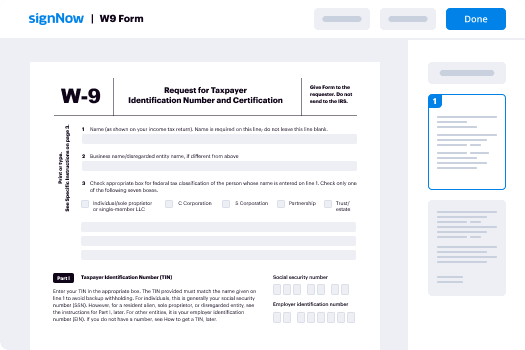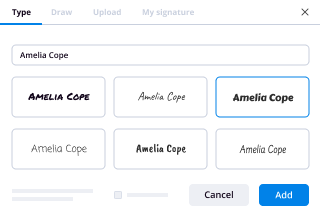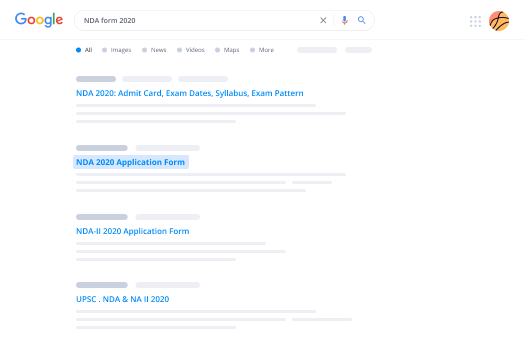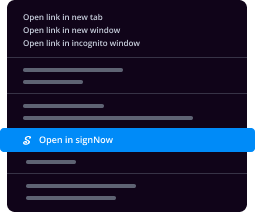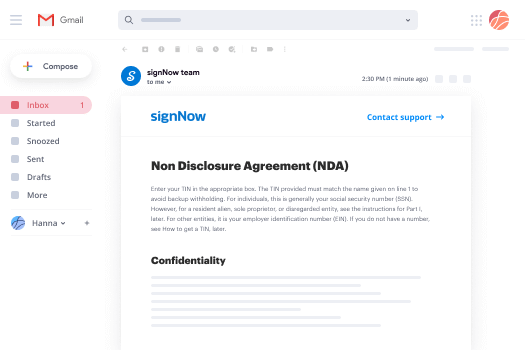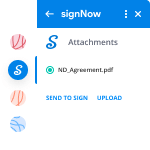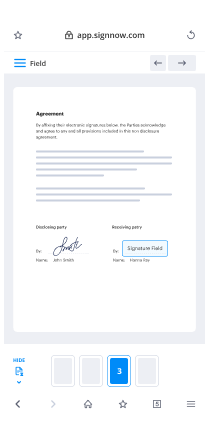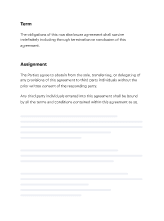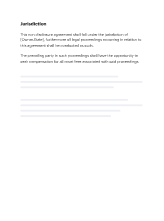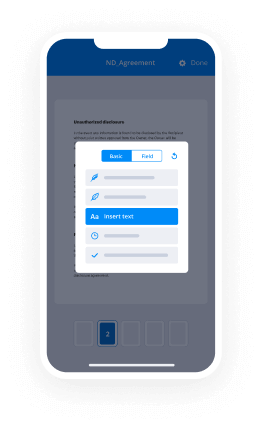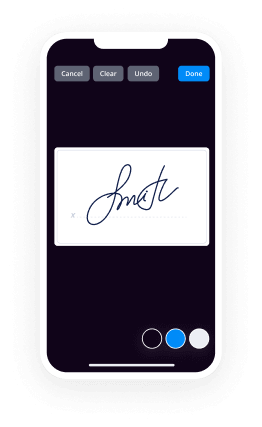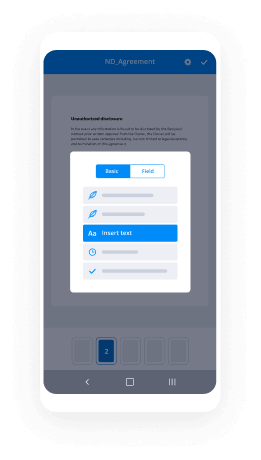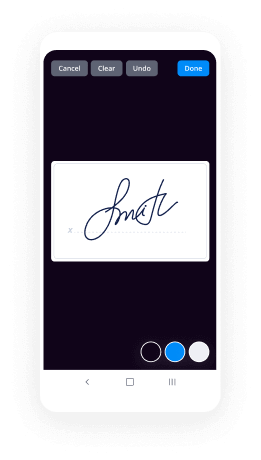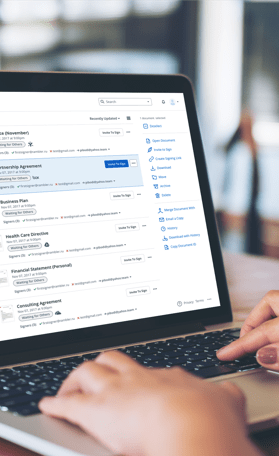IDENTITY THEFT PROTECTION GUIDE
By Dana Altman, USLegalForms.com Staff Attorney
Introduction
Identity theft is a pervasive and fast-growing crime that affects millions of Americans
each year. The Federal Trade Commission (FTC) reported that 43 percent of all
complaints received in 2002 were based on identity theft. Identity theft occurs when
someone uses your personal information without your permission to commit fraud or
other crimes. Identity thieves steal your personal information to access your financial
resources, obtain your identification documents, or obtain your benefits. A person also
commits identity theft by obtaining goods or services through the use of your identifying
information, and by obtaining identification documents in your name . Victims of identity
theft may lose job opportunities, be refused loans for education, housing, or cars, and
even get arrested for crimes they didn't commit.
Victims of identity theft are often faced with costly and time-consuming efforts to
remedy the effects of identity theft and clear their name. Federal legislation exists to help
victims of identity theft and, as well as many state laws, which vary by state.
In the fall of 1998, for example, Congress passed the Identity Theft and Assumption
Deterrence Act. This legislation created a new offense of identity theft, which prohibits
knowingly transferring or using, without lawful authority, a means of identification of
another person with the intent to commit, or to aid or abet, any unlawful activity that
constitutes a violation of federal law, or that constitutes a felony under any applicable
state or local law (18 U.S.C. § 1028(a)(7)). This offense, in most circumstances, carries a
maximum term of 15 years' imprisonment, a fine, and criminal forfeiture of any personal
property used or intended to be used to commit the offense.
Acts committed in connection with identity theft or fraud may also involve violations of
other statutes such as identification fraud (18 U.S.C. § 1028), credit card fraud (18 U.S.C.
§ 1029), computer fraud (18 U.S.C. § 1030), mail fraud (18 U.S.C. § 1341), wire fraud
(18 U.S.C. § 1343), or financial institution fraud (18 U.S.C. § 1344). These federal
offenses are felonies that carry substantial penalties in some cases, as high as 30 years'
imprisonment, fines, and criminal forfeiture.
How Criminals Steal Your Identity
Some of the more common methods criminals you to obtain your personal information
for illegal purposes include:
1. Using their position as an employee of a business or other institutions to steal records
or information while they're on the job, bribing an employee who has access to these
records, hacking these records, or conning information out of employees.
2. Stealing your mail, including bank and credit card statements, credit card offers, new
checks, and tax information. They may also complete a change of address form to have
your mail diverted to another address.
3. Rummaging through your trash, the trash of businesses, or public trash dumps to
recover discarded documents containing personal information. This practice is known as
"dumpster diving."
4. Abusing their employer's authorized access to get your credit report, or posing as a
landlord, employer, or someone else who may have a legal right to access your report.
5. Stealing your credit or debit card numbers by capturing the information in a data
storage device. They may swipe your card for an actual purchase, or attach the device to
an ATM machine where you may enter or swipe your card. This is a practice known as
"skimming."
6. Stealing your wallet or purse.
7. Stealing personal information from your home.
8. Posing as legitimate companies and claiming that you have a problem with your
account to steal personal information from you through email or phone. This practice is
known as "phishing" online, or pretexting by phone. A recently reported scam involves a
person posing as a court official (jury coordinator) calling to report that a warrant has
been issued for the victim’s arrest for failure to appear for jury duty. When the victim
protests that he or she never received a summons for jury duty, the person asks for the
victim’s social security number and date of birth to verify the information and cancel the
arrest warrant.
Some Signs That You May Be the Victim of Identity Theft
1. Your application for a credit card is turned down because of a low credit score, yet you
know that you’ve always paid your accounts on time, or your credit is accepted on less
favorable terms.
2. You receive a call from a debt collector demanding payment on an overdue account for
a credit card you have never had.
3. You receive a credit card in the mail that you’ve never applied for.
4. You receive phone calls or letters from debt collectors or businesses regarding
products or services that you did not purchase.
Initial Steps to Take if You Are a Victim of Identity Theft
1. File a report with your local police or the police in the community where the identity
theft took place. Get a copy of the report or, at the very least, the number of the report, to
submit to your creditors and others that may require proof of the crime. Provide as much
documented evidence as possible and make sure the police report lists the fraudulent
accounts. Make a note of the phone number of your investigator so you’ll be able to give
it to creditors and others who require verification of your case.
2. File an identity theft complaint with the FTC. The FTC is a clearinghouse for identity
theft information. They maintain a database of identity theft cases that they share with
law enforcement agencies for investigations. The FTC can also refer complaints to other
government agencies and companies to locate identity thieves. You may call the FTC
identity theft hotline at 1-877-438-4338, use its online identity theft complaint form,
www.consumer.gov/idtheft, or write: FTC Identity Theft Clearinghouse, 600
Pennsylvania Ave. N.W., Washington, DC 20580.
3. Create new Personal Identification Numbers (PINs) and passwords for any new
accounts you open. Avoid using easily available information like your mother's maiden
name, your birth date, the last four digits of your SSN or your phone number, or a series
of consecutive numbers.
4. If the identity thief has made charges or debits on your accounts, or on fraudulently
opened accounts, ask the company for the instructions to dispute those transactions. You
should immediately close any accounts that you know or believe have been tampered
with or opened fraudulently. Use the ID Theft Affidavit, available on the
USLegalForms.com site at http://www.uslegalforms.com/identity-theft-forms.htm , when
disputing new unauthorized accounts.
5. If your own checks are rejected at stores where you shop, contact the check
verification company that the merchant uses. The major ones are:
Fidelity National Information Services
(was Certegy)
(800) 437-5120
www.fidelityinfoservices.com
SCAN
(800) 262-7771
www.consumerdebit.com
TeleCheck
For annual file disclosure
Fraud, id theft department
(800) 366-2425
(800) 835-3243
(800) 710-9898
.
International Check Services
(800) 526-5380
.
CrossCheck
(800) 843-0760
www.cross-check.com
6. Contact your state’s Attorney General’s office for information about identity theft
assistance and laws in your state.
7. Contact your local Department of Motor Vehicles (DMV) to determine if another
license has been issued in your name. Ask the DMV what procedures exist to prevent
misuse of your identification. Some states offer a fraud alert will prevent another person
from getting a license or identification card in your name. You will need to provide
identification and copies of the police report, bills and other documents as evidence of
your fraud claim. You may need to change your driver’s license number if yours is being
used as identification on bad checks or for other fraudulent reasons. Request that your
social security number be removed from appearing on your license or that a substitute
identification be used as your driver’s license number.
When you contact the various entities to dispute charges and prove your identity has been
used fraudulently, it’s best to follow up phone calls with a dated written letter. Sending
correspondence by certified mail with return receipt requested is preferred and always
keep a copy of the letter you send. When sending dispute letters, include copies (NOT
originals) of your police report or other documents that support your position.
Correcting Credit Abuse and Credit Reporting
Contact the fraud departments of any one of the three consumer reporting companies to
place a fraud alert on your credit report. The fraud alert instructs creditors to contact you
before opening any new accounts or making any changes to your existing accounts. You
only need to contact one of the three companies to place an alert. The company you call
is required to contact the other two, which will place an alert on their versions of your
report, too.
Under new provisions of the Fair Credit Reporting Act (FCRA, §605A) you can place an
initial fraud alert for only 90 days. You may ask that an initial fraud alert be placed on
your credit report if you suspect you have been, or are about to be, a victim of identity
theft. After placing the fraud alert in your file, you're entitled to one free credit report
within twelve months from each of the three nationwide consumer reporting companies.
You may also request that only the last four digits of your Social Security number will
appear on your credit reports.
You can have an extended alert placed on your credit report if you've been a victim of
identity theft and you provide the consumer reporting company with an "identity theft
report." FTC regulations define an "identity theft report" to include a report made to a
local, state, or federal law enforcement agency. If your local police department refuses to
file a report and your situation involves fraudulent use of the U.S. mail, you can obtain an
identity theft report from the U.S. Postal Inspector. If your case involves fraudulent use
of a driver's license in your name, you might be able to obtain a report from your state's
Department of Motor Vehicles. The FTC has more information on identity theft reports at
www.ftc.gov/bcp/conline/pubs/credit/idtheft.htm#Identity
An extended alert stays on your credit report for seven years. You must have evidence of
attempts to open fraudulent accounts and an identity theft report to establish the seven-
year alert. When you place an extended alert on your credit report, you're entitled to two
free credit reports within twelve months from each of the three nationwide consumer
reporting companies. The consumer reporting companies will also remove your name
from marketing lists for pre-screened credit offers for five years unless you request to be
put back on the list before then.
Members of the military who are away from their usual duty station may place an active
duty alert on your credit reports to help minimize the risk of identity theft while you are
deployed. Active duty alerts remain on your report for one year. If your deployment lasts
longer, you can place another alert on your credit report. By placing an active duty alert,
you'll also be removed from the credit reporting companies' marketing list for pre-
screened credit card offers for two years unless you request to be put back on the list
before then.
Under federal law, you're entitled to a free report if a company takes adverse action
against you, such as denying your application for credit, insurance, or employment, and
you request your report within 60 days of receiving notice of the action. The notice will
give you the name, address, and phone number of the consumer reporting company.
You're also entitled to one free report a year if you're unemployed and plan to look for a
job within 60 days; you're on welfare; or your report is inaccurate because of fraud.
Otherwise, a consumer reporting company may charge you up to $9.50 for another copy
of your report within a 12-month period.
In addition to the free reports you’re entitled to by activating a fraud alert, the federal Fair
and Accurate Credit Transaction Act (FACTA) law enables you to receive a free credit
report per year from each of the three credit bureaus (FCRA §612). It is recommended
you make a follow up check of your report by requesting this free copy a few months
after receiving the free report you received by placing the fraud alert. To order this free
annual report from one or all the national consumer reporting companies, you must
contact the Annual Credit Report Request Service, which is the centralized source for
consumers to request this annual credit report. To contact the Annual Credit Report
Request Service on-line, visit www.annualcreditreport.com. You can also contact the
Annual Credit Report Request Service to obtain this free annual disclosure by calling toll
free (877) FACTACT (322-8228) or by using the mail request form available at the
central source website at www.annualcreditreport.com.
Once you have received your credit reports, examine each one carefully. If your credit
report shows that the imposter has opened new accounts in your name, contact those
creditors immediately by telephone and in writing. Report fraudulent accounts and
erroneous information in writing to both the credit bureaus and the credit issuers by
following the instructions provided with the credit reports. After you notify the credit
bureaus about fraudulent accounts, the bureau is required to block that information from
future reports. USLegalForms.com provides a sample letter at
http://www.uslegalforms.com/identity-theft-forms.htm to send to the credit bureaus
requesting that fraudulent accounts be blocked. The consumer reporting company has
four business days to block the fraudulent information after accepting your identity theft
report. It also must tell the information provider that it has blocked the information. The
consumer reporting company may refuse to block the information or remove the block in
some cases, such as false claims of identity theft. The consumer reporting company must
inform you if it removes the block or refuses to place the block.
The bureau must also notify the person or entity who extended credit about the fraudulent
account (FCRA, §605B). If the credit report doesn’t include the names and phone
numbers of those with whom fraudulent accounts have been opened, request this
information from the credit reporting bureau. Ask the credit grantors in writing to furnish
you and your investigating law enforcement agency with copies of the documentation,
such as the fraudulent application and transaction records. Federal law (FCRA § 609(e))
and some state laws give you the right to obtain these documents. The business must
provide copies of these records to the victim within 30 days of the victim's request at no
charge. The law also allows the victim to authorize a law enforcement investigator to get
access to these records.
Creditors will often ask you to fill out fraud affidavits. USLegalForms.com offers an
affidavit form at http://www.uslegalforms.com/identity-theft-forms.htm . No law requires
affidavits to be notarized at your own expense. You may choose to substitute witness
signatures for notarization if creditors require verification of your signature. A victim of
identity theft must provide a copy of the fraud affidavit, plus government-issued
identification, and a copy of an identity theft report in order to obtain the documents
created by the imposter. After the matter involving the fraudulent account is resolved
with the creditor, ask for a letter stating that the company has closed the disputed account
and has discharged the debts. Keep this letter in your files.
In addition, instruct the credit bureaus in writing to remove inquiries that have been
generated due to the fraudulent access. You may also ask the credit bureaus to notify
those who have received your credit report in the last six months (two years for
employers) to alert them to the disputed and erroneous information.
In all communications with the credit bureaus, you will want to refer to the unique
number assigned to your credit report and use certified, return receipt mail. Be sure to
save all credit reports as part of your fraud documentation file.
Laws in several states give individuals additional opportunities to obtain free credit
reports. Some states, such as California, have enacted legislation that allows individuals
to place a "security freeze" on their credit reports. This is stronger protection than a fraud
alert because it prevents anyone from accessing your credit file for any reason unless you
instruct the credit bureaus to unfreeze your report. If you live in a state that offers the
security freeze, you may want to consider using a security freeze if your identity thief is
persistent and doesn’t cease to use your identity to obtain credit. A list of the states where
a security freeze is available may be viewed at
www.consumersunion.org/campaigns//learn_more/003484indiv.html
Most states offer the security freeze free to victims of identity theft. Non-victims who
wish to activate the security freeze as a precaution must pay a fee in most states. Some
states make the security freeze available only to identity theft victims.
To place a fraud alert on your credit report, you may contact any of the following credit
reporting agencies:
Equifax: 1-800-525-6285; www.equifax.com; P.O. Box 740241, Atlanta, GA 30374-
0241
Experian: 1-888-EXPERIAN (397-3742); www.experian.com; P.O. Box 9532, Allen, TX
75013
TransUnion: 1-800-680-7289; www.transunion.com; Fraud Victim Assistance Division,
P.O. Box 6790, Fullerton, CA 92834-6790
Tax Information
If you think your identity has been stolen and used inappropriately for tax purposes, call
the Internal Revenue Service (IRS) at 1-800-829-1040. If you have an unresolved issue
related to identity theft, or you have suffered or are about to suffer a significant hardship
due to enforcement of the tax laws, visit the IRS Taxpayer Advocate Service website
www.irs.gov/advocate/ or call toll-free: 1-877-777-4778.
Bank and Brokerage Account Withdrawals
State laws govern fraud committed by a thief using paper documents, like stolen or
counterfeit checks. However, federal law applies if the thief used an electronic fund
transfer.
The federal Electronic Fund Transfer Act (EFTA) provides consumer protections for
transactions involving an ATM or debit card, or another electronic method to debit or
credit an account. It also limits your liability for unauthorized electronic fund transfers.
You have 60 days from the date your bank account statement is sent to you to report in
writing any money withdrawn from your account without your permission. This includes
instances when your ATM or debit card is "skimmed" that is, when a thief captures your
account number and PIN without your card having been lost or stolen.
How much you can be liable to pay if your ATM or debit card is lost or stolen depends
on how quickly you report it, so you should report the loss immediately.
If you report the loss or theft within two business days of discovery, your losses
are limited to $50.
If you report the loss or theft after two business days, but within 60 days after the
unauthorized electronic fund transfer appears on your statement, you could lose
up to $500.
If you wait more than 60 days to report the loss or theft, you could lose all the
money that was taken from your account.
Note : VISA and MasterCard voluntarily have agreed to limit consumers' liability for
unauthorized use of their debit cards in most instances to $50 per card, regardless of the
time between the discovery of the loss or theft of the card and the time you report it.
The institution generally has 10 business days to investigate after receiving your notice of
an error on your statement. After the investigation is completed, the institution must
inform you of the results within three business days and must correct an error within one
business day after determining that it occurred. If the institution needs more time, it may
take up to 45 days to complete the investigation, but only if the amount in dispute is
returned to your account and you are notified promptly of the credit. If the investigation
determines that no error occurred, the institution may take the money back if it sends you
a written explanation.
Chex Systems, Inc., produces consumer reports specifically about checking accounts, and
as a consumer reporting company, must comply with the Fair Credit Reporting Act.
Many banks use Chex Systems to find out negative banking information, such as bounced
checks, which may prevent you from opening an account. You can request a free copy of
your consumer report by contacting Chex Systems, Inc. if you find inaccurate
information on your consumer report.
Chex Systems, Inc.: 1-800-428-9623; www.chexhelp.com
Fax: 602-659-2197
Chex Systems, Inc.
Attn: Consumer Relations
7805 Hudson Road, Suite 100
Woodbury, MN 55125
To find out if the identity thief has been passing bad checks in your name, you may also
call SCAN at 1-800-262-7771.
Bank procedures for protecting your account against unauthorized transactions vary by
institution. For example, they may place a freeze on your accounts, but this can prevent
you from making ATM transactions, conducting transactions online, and other services.
If you are a victim of identity theft and your institution offers online access to your
account, you should use it to monitor to your account daily for unauthorized transactions.
The above protections do not apply to brokerage accounts. If an identity thief tampers
with your brokerage account, refer to your account agreement for information on what to
do. Read the account agreement to determine if you are responsible for securing your
own account information and know the steps you should take if your information has
been compromised. Immediately report the incident to the brokerage company and notify
the Securities and Exchange Commission at www.sec.gov as well as the National
Association of Securities Dealers at www.nasd.org.
Bankruptcy
If you believe someone has filed for bankruptcy in your name, send written notification
to the U.S. Trustee in the region where the bankruptcy was filed. A list of the U.S.
Trustee Programs' Regional Offices is available on the UST website, or check the Blue
Pages of your phone book under U.S. Government Bankruptcy Administration.
Your correspondence should include the facts of your case and provide proof of your
identity. If you provide enough documented evidence of your claim, the U.S. Trustee will
make a criminal referral to law enforcement authorities. You also may want to file a
complaint with the U.S. Attorney and/or the FBI in the city where the bankruptcy was
filed. You may need to hire an attorney to help prove your filing was fraudulent, since the
U.S. Trustee does not offer free legal help or court documents. Copies of court
documents may be obtained from the bankruptcy clerk's office for a fee.
False Criminal Charges
If you are falsely charged with a crime or traffic violation, file an impersonation report
with the police/sheriff's department or the court, and confirm your identity. Have the
police department take a full set of your fingerprints, photograph you, and make a copies
of your photo identification documents, such as your driver's license, passport, or travel
visa. You can request the police to establish your innocence by comparing the prints and
photographs with those of the imposter.
If the arrest warrant is not issued from the state or county where you live, ask your local
police department to forward the impersonation report to the police department in the
jurisdiction where the arrest warrant, traffic citation, or criminal conviction originated.
Once your name is cleared, the law enforcement agency should recall any warrants and
issue a "clearance letter" or "certificate of release". To prevent being falsely arrested
again, you need to keep this document on your person at all times. Ask the law
enforcement agency to file the record of the follow-up investigation establishing your
innocence with the district attorney's (D.A.) office and/or court in the jurisdiction where
the crime occurred, so that an amended criminal complaint can be filed. It is difficult o
completely remove your name from a criminal database once it is entered, but you should
request that the "key name" or "primary name" be changed from your name to the
imposter's name (or to "John Doe" if the imposter's true identity is not known), with your
name noted as an alias.
State laws on clearing your name is court records vary by state. You may contact the
D.A.'s office in the county where the case was originally prosecuted for assistance, but
may also need to hire a criminal defense attorney to help you clear your name.
If the identity thief is apprehended by law enforcement and goes to trial and/or is
sentenced, write a victim impact letter to the judge assigned to the case. Contact the
victim-witness assistance program in your area for advice on how to effectively impact
the legal proceedings.
Debt Collectors
You may stop a debt collector from contacting you by writing a letter to the collection
agency telling them to stop. After receiving you letter, the debt collector may only
contact you further to tell you there will be no further contact, or to inform you that the
debt collector or the creditor intends to take some specific action.
You may also send a letter to the collection agency, within 30 days after you received
written notice of the debt, stating that you do not owe the money. Include copies of
documents that support your claim, and also include a copy (NOT original) of your police
report. After receiving your letter, a collector must send you proof of the debt in order to
renew collection activities.
Passport Fraud
If you've lost your passport, or believe it was stolen or is being used fraudulently, contact
the United States Department of State (USDS) through their website at
www.travel.state.gov/passport/passport_1738.html, or call a local USDS field office.
Local field offices are listed in the Blue Pages of your telephone directory. Even if you
do not have a current passport, you should notify them of your identity theft to alert them
to anyone ordering a passport fraudulently.
Phone Fraud
If an identity thief has established phone service in your name, is making unauthorized
calls that seem to come from and are billed to your cellular phone, or is using your calling
card and PIN, contact your service provider immediately to cancel the account and/or
calling card. Open new accounts and choose new PINs. For assistance with difficulties in
removing fraudulent phone charges from your account or getting an unauthorized account
closed, contact the appropriate agency below:
- Contact your state Public Utility Commission for disputed local call charges.
- Contact the Federal Communications Commission (FCC) for disputed cellular or long
distance charges. The FCC regulates interstate and international communications by
radio, television, wire, satellite, and cable. Call: 1-888-CALL-FCC; TTY: 1-888-TELL-
FCC; or write: Federal Communications Commission, Consumer Information Bureau,
445 12th Street, SW, Room 5A863, Washington, DC 20554. You can file complaints
online at www.fcc.gov, or e-mail your questions to fccinfo@fcc.gov.
Social Security Number Misuse
The SSA Office of the Inspector General should be notified of information regarding
specific instances of SSN misuse that involves the buying or selling of Social Security
cards, may be related to terrorist activity, or is designed to obtain Social Security
benefits. You may file a complaint online at www.socialsecurity.gov/oig, call toll-free: 1-
800-269-0271, fax: 410-597-0118, or write: SSA Fraud Hotline, P.O. Box 17768,
Baltimore, MD 21235. You may request a replacement Social Security Number card if
yours has been stolen and, in very serious identity theft cases, you may attempt to change
your Social Security Number.
You also may call SSA toll-free at 1-800-772-1213 to verify the accuracy of the earnings
reported on your SSN, request a copy of your Social Security Statement, or get a
replacement SSN card if yours is lost or stolen. Be sure to follow up with written
correspondence and keep a copy for your files. You may also request a Social Security
Statement (Form 7004) at www.ssa.gov/online/ssa-7004.html.
Student Loans
You should close the loan account by contacting the school or program that opened the
student loan. Also report the fraudulent loan to the U.S. Department of Education. Call
the Inspector General's Hotline toll-free at 1-800-MIS-USED; visit
www.ed.gov/about/offices/list/oig/hotline.html?src=rt; or write: Office of Inspector
General, U.S. Department of Education, 400 Maryland Avenue, SW, Washington, DC
20202-1510.
Medical Identity Theft
An identity thief may use a victim's identifying information to obtain medical treatment
or medical supplies, or to submit false claims to Medicare/Medicaid or to a victim's
health insurance plan. Medical identity theft is on the rise among large crime rings and
among insiders or employees who work in the health care profession and have access to
patient records. According to the World Privacy Forum, as many as 250,000 to 500,000
Americans have become victims of this type of identity theft. For further details on
medical identity theft and help for consumers and victims, see the World Privacy Forum's
report at www.worldprivacyforum.org/medicalidentitytheft.html.
Preventative Measures
1. If someone contacts you by phone, mail, or Internet, don't give out personal
information unless you requested to be contacted or are sure you know who you're
dealing with. Identity thieves often impersonate corporate agents, government
officials, and others to obtain your SSN, mother's maiden name, account numbers,
and other identifying information. If you are asked for any type of personal
information, ask the caller for his/her name and telephone number and the
organization he/she is representing. Hang up and then call the company using the
customer assistance number the company provides with your account statement or
bill (not the number you were given by the caller). If the call was legitimate, they
can connect you to the proper extension. Check an organization's website by
typing its URL in the address line, rather than cutting and pasting it. Many
companies post scam alerts when their name is used improperly.
2. Invest in a paper shredder (they can be purchased inexpensively for $15-20).
Shred any mail or other documents containing personal information before
discarding in the trash, especially charge receipts, copies of credit applications,
insurance forms, physician statements, checks and bank statements, expired
charge cards that you're discarding, and credit offers.
3. Don’t leave mail in your mailbox for pickup. Deposit your outgoing mail in post
office collection boxes or at your local post office. Promptly remove mail from
your mailbox. If you're planning to be away from home and can't pick up your
mail, call the U.S. Postal Service at 1-800-275-8777 to request a vacation hold.
The Postal Service will hold your mail at your local post office until you can pick
it up or are home to receive it.
4. Remove your name from mailing lists for credit offers by calling 1-888-5-
OPTOUT (1-888-567-8688).
5. Memorize your SSN and don't carry your SSN card. Store it in a secure place.
6. Only give out your SSN only when absolutely necessary, and request other types
of identifiers whenever possible, such as on a driver’s license or insurance policy
number.
7. Carry only the identification information and the credit and debit cards that you'll
actually need when you go out.
8. Beware of phony promotional offers which identity thieves use to get your
personal information
9. Safeguard your purse or wallet and forms with sensitive information in a safe
place at work.
10. When ordering new checks, pick them up from the bank instead of having them
mailed to your home mailbox.
11. Don’t put any personal information in a web page on the Internet unless it is
submitted over a secure connection, as indicated by a closed lock icon in the
bottom of your browser window, as well as "https" in the browser window
address bar.
12. Never leave receipts at bank machines, bank counters, trash receptacles or
unattended gasoline pumps.
13. Memorize your passwords. Do not record them on any cards or on anything in
your wallet or purse. Decline when prompted by your computer to store
passwords for you.
14. Contact your creditor or service provider if expected bills don't arrive.
15. Never put your credit card or any other financial account number on a postcard or
on the outside of an envelope.
16. Destroy all checks immediately when you close a checking account. Destroy or
keep in a secure place, any courtesy checks that your bank or credit card company
may mail you.
17. Promptly examine and reconcile your check and credit card statements and
reports. Immediately dispute any purchases you did not make.
18. Limit the number of credit cards you have, and cancel inactive accounts.
19. Remove your name from mail marketing lists. You may contact Direct Marketing
Association by writing to: Mail Preference Service, P.O. Box 282, Carmel, NY
10512 and include a processing fee of $1.00 in the form of a check or money
order. You may also opt-out online for a fee of $1.00 at www.dmaconsumers.org.
20. Remove your phone number(s) from telemarketing lists by phoning the FTC’s Do
Not Call Registry at (888) 382-1222 or registering online at www.donotcall.gov.
Many states also have their own do not call registry.
21. Order your Personal Earnings and Benefits Estimate Statement from the Social
Security Administration by calling (800) 772-1213. The SSA automatically mails
it to individuals three months before the birthday each year. A request form is also
available at www.ssa.gov/online/ssa-7004.html.
22. Ensure that your PIN numbers cannot be observed by anyone while using an
ATM or public telephone.
23. Closely monitor the expiration dates on your credit cards and contact the issuer if
you don't receive a replacement prior to the expiration date. Sign the back of your
new card immediately upon receipt.
Online Safety Tips
1. Use virus protection software and keep it updated.
2. Make sure the webpage is sending any personal information you type in with
encrypted security software. To determine is the information is encrypted and
secure, look at the URL of the page you are on when you are asked to give the
personal information. An unsecured URL will look like this: http://www.site.com.
A secure server will have an "s" either in front of or following the "http", and it
will look like this: https:/ www.site.com or shttp://www.site.com. The bottom of
the browser window will also display an icon, showing whether the information is
“locked” or “unlocked”. If it is locked, a secure site will also have an icon that
appears as locked padlock on the bottom of your browser window. An unlocked
insecure site will have an unlocked padlock icon in the same area.
3. Install a spyware protection program and firewall.
4. Download free software only from sites you know and trust. Don’t install
software without knowing what it is.
5. In your browser, set the security preferences to at least “medium.”
6. Don’t click on links in pop-up windows or in spam e-mail.
7. Don’t open email attachments from unknown senders.
8. Don’t give out personal information in chat rooms or publicly posted messages.
9. If you shop online, consider using a credit card or bank account that you use
exclusively for online purchases.
10. Don’t use the "Remember my Password" function on any website that contains
personal or financial information.
11. Clear your cache files after browsing the Internet by going to the "Preferences"
folder in your browser and clicking on the "Empty Cache" button. Sometimes this
option is in the "Advanced" menu of the browser preferences. In Internet
Explorer, go to "Internet Options" from the "Tools" menu and click on "Clear
History".
12. Completely log out of sites that contain your financial information, such as an
online banking website.
Identity Theft Insurance
The value of identity theft insurance is a matter of personal judgment. It may be
purchased as part of some homeowner’s and renter’s insurance policies, as standalone
policies, or offers through your credit card issuer. Such insurance covers your out-of-
pocket expenses to clear your name, such as phone bills, lost wages, notary, certified
mailing costs, and sometimes attorney fees. However, identity theft isn't going to fix your
credit or return the money taken from your accounts through fraudulent transactions. On
average, these policies cost between $25 and $50 for $15,000 to $25,000 worth of
coverage.
Useful Links
American Association of Retired Persons -
http://www.aarp.org/money/wise_consumer/scams/a2002-10-03-
WiseConsumerIdentityTheft.html
Annual Credit Report Request Service- http://www.annualcreditreport.com
Better Business Bureau -
http://www.bbbonline.org/idtheft/complaint.asp
Federal Bureau of Investigation -
http://www.fbi.gov/publications/financial/fcs_report052005/fcs_report052005.htm#e1
Federal Deposit Insurance Corporation -
http://www.fdic.gov/consumers/consumer/ccc/theft.html
Identity Theft Resource Center -
http://www.idtheftcenter.org/index.shtml
National Consumers League -
http://www.nclnet.org/privacy/
National Fraud Information Center -
http://www.fraud.org/welcome.htm
Privacy Rights Clearinghouse -
http://www.privacyrights.org/identity.htm
Social Security Administration Online -
http://www.ssa.gov/pubs/idtheft.htm
United States Department of Justice –
http://www.usdoj.gov/criminal/fraud/idtheft.html
United States Postal Inspection Service -
http://www.usps.com/postalinspectors/idthft_ncpw.htm


